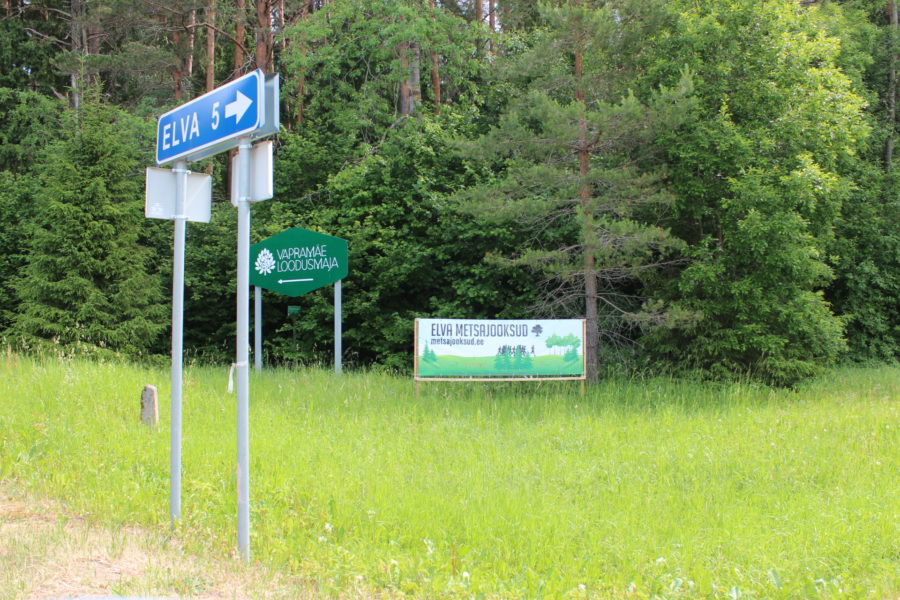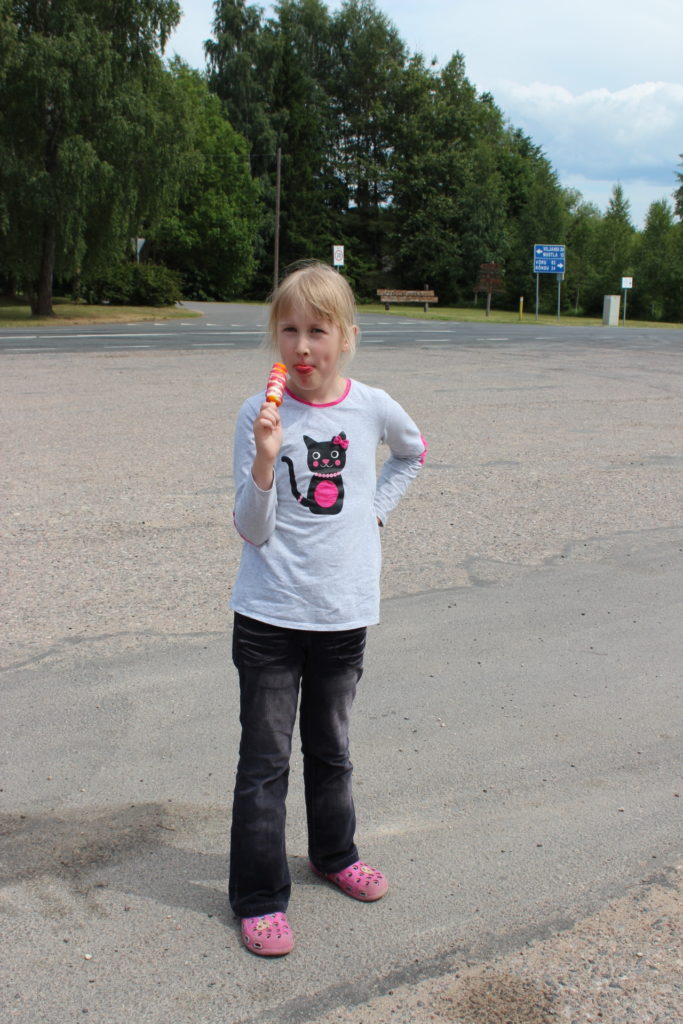NordenBladet – Friday night at about 20.30 I stumbled upon the idea that I would wish to travel to South-Estonia. Once that feeling has crossed me it becomes difficult to fight it – the easiest solution is to give in to the desire. Therefore at 20.45 I already had my luggage prepared, the tiny vehicle cramped with stuff (including blankets, sheets and pillows… just in case) and we dashed from Saku through Rapla and Türi towards Imavere. While packing in a hurry one never really knows where the road runs, then I pack next to everything that I could possibly be needing – so one could find from the car everything from rubber boots to children’s toys.
We were back home in less than 23 hours (on Saturday at 19.30), yet what on Earth can one do during that limited time when one only wishes! The program was so concise that today it feels as if we returned from a one-week holiday.
First stop: Imavere. I wished to view the knight manor of Imavere (German: Immafer) in Pilistvere parish and its surroundings. Imavere manor was established in 1748 at the time when it was separated from Loopre manor. The manor has been the possession of the von Salzas as well as the von Pistohlkorses. The last owner of the manor before the 1919 expropriation was Eugen von Pistohlkors. Like most Estonian manors this, too, is breaking down, has grown into wilderness and has been abandoned. From Imavere on we headed through Põltsamaa to Tartu. We stayed overnight at my younger sister’s place from where we continued the journey next morning at about 12 o’clock.



https://www.instagram.com/p/BkKbgWgl7ZO/?taken-by=helenareetennet
Next stop was in Tõravere and then in Elva. The entrance to Elva was promising, turning from between picturesque fir forests, yet the centre was not that fascinating. I prefer the toy-town type of small towns like Tarvastu and Mustla. We bought water and took some cash since we thought that we’d be staying at Intsu, Männiku Metsatalu in Viljandi – I have stayed there once with my sister and I found it quite nice (see the blog post HERE & HERE). We did a bit of an excursion in Elva – to the bus station and music school – and then proceeded with the journey. I thought to myself that it would be interesting to know whether Kerli Kõiv actually lived nearby.



After passing through Elva we decided to digress from our route to anywhere that promised us some interesting sightseeing to view. The next stop was Meeri knight manor (German: Meyershof) in Nõo parish in Tartu county. The manor has been mentioned in the 16th century and back in those days it belonged to Tartu Capitol Dome. The last owner of the manor before its expropriation in 1919 was Ernst Karl Maria von Seidlitz. Unfortunately I took no pictures from the manors Imavere and Meeri, however they were very similar (two-storey buildings, red colour, relatively similar in style and as of today rather in ruins and in the hands of private persons). Both manors were originally one-storey buildings, yet later they were used as schoolhouses and another floor was added. From that moment on I decided that I would take pictures of all places of interest so that I could share them in my blog and I regretted not taking pictures of the manors already seen.
The next object on the way was Vana-Kirepi manor on Rõngu municipality territory. Kirepi manor (German: Kirrumpäh) was established in the 17th century. Throughout centuries the manor has had many owners. Before the expropriation of 1919 the manor belonged to Bruno von Samson-Himmelstjerna. The wooden main building as well as the white stone barn with three arched entrances has been preserved.


Further on from Rõngu bus station, according to the road signs on the way there was Rõngu feudal fortress (German: Ringen), that was a feudal fortress of a Tartu bishop, the ruins of which are situated near Rõngu in Lossimäe village (2 km from the small town Rõngu to the North-West). The fortress was built in the 1st half of the 14th century (approximately in 1340) and it was intended to defend the southwestern part of the diocese of Tartu. In the Middle Ages the fortress belonged to the Tödwen family. Since 1583 the Jesuit Order used the premises and in 1625 when the Swedish authority came it was blown up. Apparently we took the wrong way and thus didn’t see the fortress, yet at Lossimäe a fine design solution of mailboxes and notice-board and also the brook Valguta caught our eye.



From Rõngu on we headed through Koruste and Pikasilla to Suislepa village where we made our next stop in order to see the Uue-Suislepa manor on the banks of Õhne River. Uue-Suislepa or Suislepa manor (German: Suislep) was established in 1796 when the Russian emperor Paul I separated it from the manor belonging to the state and donated it to Ernst Mengden.
In 1799 the manor became the property of the gentry Kruedener family and remained so until the 1919 expropriation. After expropriation the manor was converted into a schoolhouse that is in force probably until this day. Also many ancillary buildings have been preserved from which a windmill a couple hundred meters to the North-West from the centre of the manor most catches the eye.





Tarvastu greeted us with a beautiful picnic table that immediately reminded us that we were getting hungry. I had planned to visit the cafe in central Mustla (at Posti 21), but it was closed. That was really sad as they have the world’s best homemade soups, main courses and cakes and at what a nice price! Practically for free. So instead we brought from Mustla Konsum (Posti 52a) salad and disposable forks and dashed back to the picnic table at Tarvastu River on the side of Tarvastu Park. After the meal we went to see the ruins of Tarvastu fortress. Well, really nice place it was, since there are sheep living in the fortress! The children were so delighted, and what great view there is from above! Simply wonderful!
https://www.instagram.com/p/BkKbFFrlaM3/?taken-by=helenareetennet






https://www.instagram.com/p/BkKhO_UAOoh/
https://www.instagram.com/p/BkKV1s6FDfn/?taken-by=helenareetennet
https://www.instagram.com/p/BkKX9_Bld1T/?taken-by=helenareetennet
https://www.instagram.com/p/BkKY-zjluHq/?taken-by=helenareetennet
https://www.instagram.com/p/BkKZYinFoGc/?taken-by=helenareetennet
Mustra centre was very sweet, there were pictures drawn to the walls of houses and bus stop pavilions and there were flowerpots hanging from street posts. Unfortunately the Tarvastu handicraft shop and museum were closed.





Further on we headed to Tarvastu cemetery (Tinnikuru, 69716 Viljandi). I was there for the first time while in Viljandi we usually visit Paistu cemetery where many relatives from my father’s line have been buried. Since lately I have taken a keen interest in my forefathers and our family’s origin then I sought from Geni data that at least two of our close relatives have been buried there. Peeter Pill, born in Holstre, Tokerpilli farm in 1844 (a farmer), and Jaan Pill (landlord), the son of Peeter Pill, born in Tarvastu, Oina farm. Jaan is the grandfather of my dad Jüri Ennet and Peeter is the great grandfather. I called my dad to ask how I can best find the tomb and soon we found it. First path to the left from the main gate and then on the right side. There it was, under a huge tree, Jaan Pill. Unfortunately father didn’t know the location of the grave of Peter Pill (11.01.1844-09.05.1909), I however think that perhaps it is right next to the other one without the headstone and that the relatives do not know. Maybe next time I will hear it from the graveyard guard – I will go there without children so that I can take more time to investigate the farm houses and tombs of my ancestors and seek more information.

From Tarvastu cemetery we headed further to Holstre. We were looking for Tokerpilli farm land (in archives also Tocka, Tocho and Tokre) – 83.3 hectars of forest and field and the farm itself. It was further from Holstre along Mõnnaste road towards Luige. Peeter was born in Tokerpilli farm in 1702, then in 1732 his son Jakob, then in 1767 his son Jaan, then in 1805 his son Peeter, then in 1844 his son Peeter. The Peeter who was born in 1844 in Tokerpilli farm is my father’s great grandfather who is supposedly buried to Tarvastu like his son the landlord Jaan Pill. Before those times people were probably buried in the farm land’s ground, but it is not exactly known. For more than 300 years the forefathers from my father’s line have lived in Tokerpilli, I have not yet had the chance to investigate who and when and to who sold the land – all I know is that unfortunately it is not in the hands of our relatives. Since there was a huge sign stating that there was “Entrance only upon written consent from owner of the property”, I did not dare to go any further – who knows these lunatics, they may actually take the gun and shoot you. That strict a sign – only upon written permission – a regular habitant wouldn’t use on one’s territory. Especially when in other cases in Viljandi people are very kind, more often with the mentality “Kindly find the key under the mat” and the broom placed against the door-style. With children one just wouldn’t take the risk. So therefore also getting to know Tokerpilli will be postponed. I will call them and make an appointment.
After Tokerpilli we went to Paistu cemetery. It was the five o’clock and we thought we might be going back home. Thought so, did so. The way back went through Suure-Jaani, Lahmuse, Vändra, Järvakandi and Rapla. 23 hours and so many impressions! Expenses: gas 36 EUR + ca 20 EUR (salad, mineral water, lemonade, ice cream).
